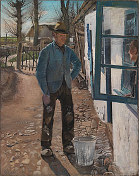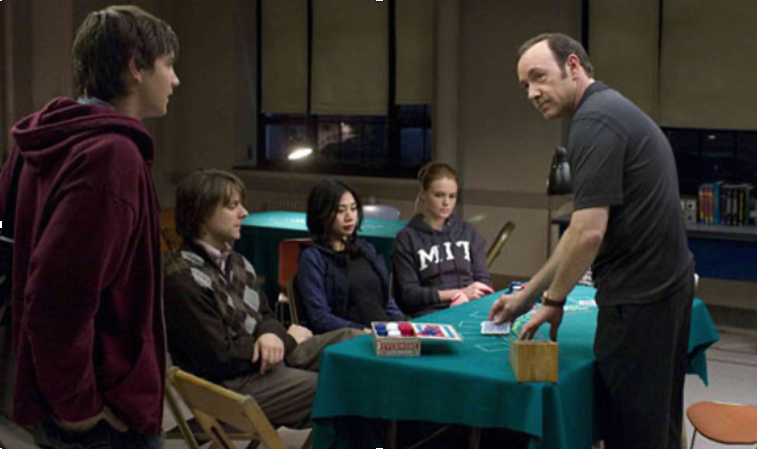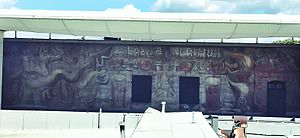Whitewashing
by Karen Fang
Today, whitewashing. The University of Houston presents this series about the machines that make our civilization run, and the people whose ingenuity created them.
We usually talk here about innovation, but sometimes resistance to innovation is just as interesting. Whitewashing is one of those stories.
Both a substance and a practice, whitewash is either a paste of lime or chalk, or the act of using that paste to mask or lighten discoloration. It's been used since the 1500s, when Europeans began whitewashing houses for looks and hygiene.

L.A. Ring, Whitewashing the Old House. Courtesy of National Gallery of Denmark.
Yet whitewash is not confined to building but also is used for humans. Since its invention men and women hoping for ivory complexions also have daubed talc or flour to their faces. Cosmetic in both the personal and architectural sense, whitewash is usually seen as a good thing.
Whitewash's capacity to bleach color or hide stains, however, sometimes seems like deceit. Over time the word has become a negative metaphor, particularly in regards to racial erasure. We often hear this today when Hollywood movies are accused of remaking stories about people of color with white characters. This holding-to-account is also, I think, a good thing, but it's interesting how the metaphor of whitewash flipped from good to bad. It shows how our changing values reflect our changing times.

Scene from 21, a 2008 Columbia Pictures film based on the real-life story of the MIT blackjack team. In actuality, the team's racial makeup was almost entirely Asian American, but in the film adaptation the starring roles were all played by white actors. (21, Columbia Pictures, 2008).
One of the most explicit instances of racialized whitewashing is the América Tropical mural in downtown Los Angeles. This massive 80x18' mural was commissioned in 1932 and designed by celebrated Mexican artist David Alfaro Siqueiros, a friend of Diego Rivera and José Clemente Orozco. The three were known as Los Tres Grandes, the "Three Great Ones," for their work in Mexico's rich tradition of mural painting, particularly its role in revolutionary change.
Of the three artists, Siqueiros was the most stylistically innovative and politically radical. For América Tropical, he experimented with airbrush technology and used commercial enamels like Duco car paint. Siqueiros also ignored murals' traditionally celebratory imagery, and instead created a shocking image of native warriors confronting the American eagle over a crucified body, with ruined antiquities littering the ground.
The mural's message is clear: subtitled Oprimida y Destrozada por los Imperialismos, Oppressed and Destroyed by Imperialism, América Tropical condemns colonial devastation of native culture. Not surprisingly, the mural was controversial, and city authorities quickly ordered the mural whitewashed.
Fortunately, though, whitewash wasn't stronger than the industrial grade paint that Siqueiros used. By the 1960s, after thirty years of being obscured, chipping whitewash began to reveal Siqueiros's long-lost mural.

América Tropical today.
América Tropical today.Courtesy of Google Earth.
Today you can see conserved traces of this potent public artwork, which once was controversial but now speaks to a very different America. Like early uses of whitewash to lighten complexions, as well as current metaphorical references to cultural whitewashing, América Tropical was a literal instance when whitewash was deployed to efface darker-skinned bodies. Yet I take heart in the fact that whitewash didn't outlast Siqueiros's searing vision. Sometimes whitewash is most beautiful when it fails.
I'm Karen Fang, at the University of Houston, where we're interested in the way inventive minds work.
Daniel Hernandez, 'America Tropical': A forgotten Siqueiros mural resurfaces in Los Angeles. Los Angeles Times, September 22, 2010.
Jessica Leigh Mattern, "The Very Practical Reason Farmhouses are usually White." Country Living, July 2016.
Whitewashing in Film. Wikipedia.